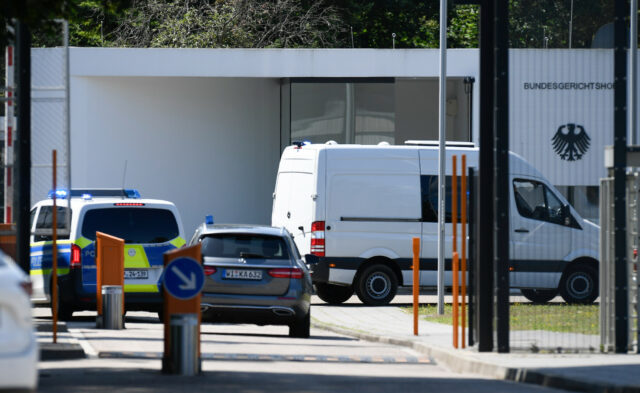
Arrests of Central Asian Jihadists in Germany and the Netherlands Reveals Persistent Islamic State Threat to Europe
Publication: Terrorism Monitor Volume: 21 Issue: 17
By:

On July 6, law enforcement in Germany and the Netherlands arrested nine Central Asians on terrorism-related charges. In Germany, five Tajik nationals, one Kyrgyz citizen, and one Turkmenistani citizen were arrested in the Federal State of North Rhine-Westphalia for allegedly creating and participating in a local terrorist organization and supporting Islamic State (IS). In the Netherlands, a married couple—a Tajik husband and Kyrgyz wife—were also arrested in Eindhoven and Breda. Both are suspected of plotting terrorist attacks, with the husband also suspected of IS membership (Kaktus Media, July 6).
Since 2022, the suspects have been collecting money for IS and running a terrorist cell in Germany. They were also probing possible places for attacks and trying to acquire weapons in that country. The Dutch and German authorities were in contact with each other during the investigations, as the suspects in the two countries collaborated in plotting attacks. All nine of the suspects arrived from Ukraine in 2022 as refugees after the Russian invasion (Asiaplus.tj, July 6). Most likely, however, they met each other in Syria or Iraq, where IS controlled vast amounts of territory between 2014 and 2019—and attracted foreign jihadists from around the world, including Central Asia.
IS is now largely defeated in Syria and Iraq. However, its members are scattered around the world and able to exploit their networks and skills to launch attacks elsewhere. The arrests in Germany and the Netherlands show that IS’s legacy lives on and its members and loyalists still present a threat to security in Europe.
Central Asian Foreign Fighters in IS ranks
Between 2011 and 2017, approximately 5,000 people from the five Central Asian states traveled to Syria and Iraq to join IS and other jihadist organizations (Kursiv Media, November 1, 2018). These foreign fighters could be divided into two contingents: the first fought within IS ranks, and the second fought in the ranks of groups linked with al-Qaeda’s affiliate, Jabhat al-Nusra. Central Asian foreign fighters in IS ranks were based around al-Raqqa in Syria and Mosul in Iraq. Perhaps the most notorious Central Asian foreign fighter was Tajik national Gulmurod Khalimov, who joined IS in 2015. Prior to joining IS, he was the head of a SWAT team in Tajikistan. Following the death of Abu Umar Shishani in 2016, he was appointed as IS’s minister of war (Kloop.kg, September 5, 2016).
IS has used and inspired its Central Asian members and sympathizers to carry out attacks in various parts of the world. Kyrgyz and Tajik nationals were reported to have been involved in the Istanbul airport attack in 2016, for example (Kloop.kg, July 5, 2016). An Uzbek national, Abdulgadir Masharipov, also carried out an attack at a nightclub in Istanbul in January 2017, killing 39 people (Tass.ru, January 8, 2017). Between 2017 and 2018, IS sympathizers and recruits from Central Asia carried out other vehicular, truck-ramming, and knife attacks in New York, Stockholm, and Tajikistan’s Khatlon province, respectively, killing and injuring dozens. These attacks demonstrated that the IS threat had moved outside of Syria and Iraq’s national borders, becoming a global security issue.
Fleeing to Ukraine and Beyond
IS’s loss of its last stronghold in Syria in 2019 presented IS members with four options: remaining in the still-unstable areas of Syria and Iraq; returning to their home countries; relocating to other theaters of conflict, such as Afghanistan; or fleeing to countries where they would be relatively safe from prosecution and could start a new life—or otherwise wait until new opportunities arose. The final option has been the most compelling for Central Asian militants.
Central Asian foreign fighters began leaving IS ranks as early as 2016, after becoming disillusioned with the organization’s excessive brutality and the perceived cynical behavior of its members. Some of these fighters traveled to Ukraine on their own, while others were deported by Turkish authorities and chose Ukraine as their destination point. [1] Either way, those who chose Ukraine perceived it as a safe haven, with many fellow Russian speakers and a sizable Muslim community into which they could readily integrate (Hromadske.ua, July 17, 2017).
However, another important factor in favor of relocating to Ukraine was the country’s porous borders and the ability to obtain fake identities with new passports (Hromadske.ua, July 17, 2017). By mid-2017, several hundred IS members had moved to Ukraine, including Georgian national Tsezar Tohosashvilli, who served as the deputy to IS’s former minister of war, Abu Umar Shishani. However, he was arrested by Ukraine’s national security service in 2019 with fake documents (Zaborona, December 2, 2020; Militant Leadership Monitor, January 3, 2020).
Conclusion
In the case of the nine Central Asians arrested in Germany and the Netherlands, residence in Ukraine allowed them to relocate to Europe as “refugees.” The fact that nationals of three different Central Asian countries established a terrorist network in Europe and plotted attacks together shows their shared past as IS members continued after the fall of IS’s “territorial caliphate.” Such Central Asian IS veterans may be relatively few in number, but still present a threat to European security from the shadows.
Notes:
[1] According to a bilateral agreement between Turkey and Ukraine, deportees detained in Turkey can choose where to be sent so long as the destination is a visa-free country for them. Central Asians do not need visas to travel to Ukraine, and they, therefore, often choose Ukraine as a destination. Ukraine must accept them, and it does.



